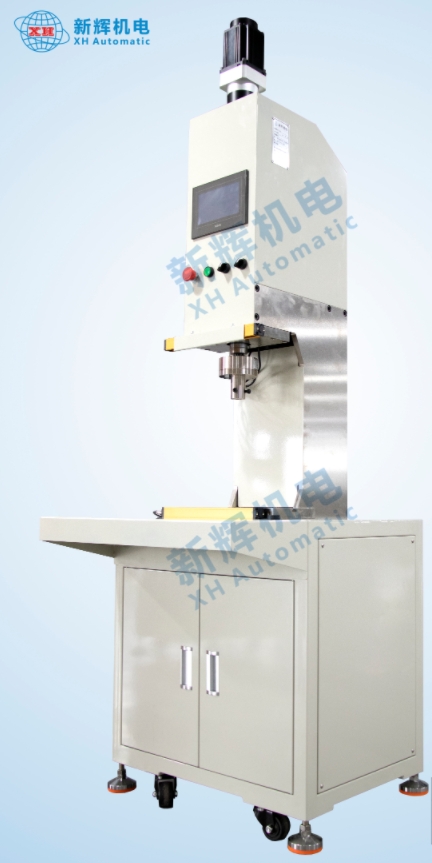What are the common sensor failures and their solutions for manual servo presses?
First, the common sensor failure and solutions
1, pressure sensor failure
l No pressure display or abnormal display:
Reason: pressure sensor damage, such as internal sensitive components due to overload, impact and other damage; sensor line breaks, shorts or poor contact, in the frequent movement of equipment, vibration conditions, the line is prone to such problems; sensor signal conditioning circuit failures, can not be converted to the sensor output of the weak signal into a suitable electrical signal for the control system to read.
Solution: Use professional testing equipment to check the pressure sensor, if damaged, then replace the same type of new sensors; carefully check the line, repair breaks, shorts, reconnect loose connectors, if necessary, replace the damaged line; check the signal conditioning circuit, repair or replace the faulty electronic components.
l pressure measurement is not accurate:
Reason: pressure sensor zero drift, long-term use of internal parameters change; sensor by the temperature, humidity and other environmental factors, such as high temperature, high humidity in the industrial environment, the sensor performance will decline; sensor installation location is not appropriate, not in accordance with the provisions of the installation in the part of the pressure can be accurately measured.
Solution: zero calibration of the pressure sensor, in accordance with the equipment instructions for the operation or use of calibration instruments; for the sensor to add protective devices, such as installation in a constant temperature, humidity protection box, to reduce the interference of environmental factors; re-adjustment of the sensor mounting position, to ensure that the installation is correct.

2, displacement sensor failure
l slide displacement measurement deviation:
Reason: the displacement sensor mounting bracket is loose, resulting in the sensor position offset, can not accurately measure the displacement of the slider; the sensor's own precision decline, may be due to use for too long, the internal parts wear and tear; magnetostrictive displacement sensors of the magnetic ring position changes, affecting the measurement accuracy, this situation is more likely to occur after the equipment is subjected to strong vibration.
Solution: Tighten the mounting bracket of the displacement sensor and recalibrate the position of the sensor; if the accuracy of the sensor can not meet the requirements, consider replacing it with a higher precision or a new displacement sensor; for magnetostrictive displacement sensors, re-adjust the position of the magnetic ring and carry out calibration.
l Displacement signal loss:
Reason: the displacement sensor cable breaks, may be caused by frequent bending, pulling; sensor internal circuit failure, such as chip damage; sensing element surface dirt, foreign matter blocking, affecting the signal transmission, more common in dusty working environments.
Solution: check the cable, if broken need to replace the cable; send for repair or replacement of the internal circuit failure of the displacement sensor; clean up the surface of the sensing element of the dirt and foreign matter, to ensure that the signal transmission is normal.
3、Temperature sensor failure
l Temperature measurement error or no display:
Reason: the temperature sensor probe is damaged, such as burned by high temperature or damaged due to external impact; poor contact between the sensor and the object to be measured, such as the installation is not tightly fitted, resulting in the measurement is not the actual operating temperature; temperature sensor signal transmission line is damaged, affecting the signal transmission.
Solution: Replace the damaged temperature sensor probe; reinstall the temperature sensor to ensure good contact between the probe and the object to be measured; check and repair or replace the damaged signal transmission line.
l Temperature alarm malfunction:
Reason: the alarm threshold of the temperature sensor is set unreasonably, and the actual working temperature range of the equipment does not match; the sensor is subject to electromagnetic interference, in the working environment with a strong electromagnetic field, the sensor signal may be interfered with and fluctuations, triggering false alarms.
Solution: According to the actual working temperature of the equipment, re-set the temperature alarm threshold; for the temperature sensor to add shielding measures, such as the use of shielded wires, the installation of shielding to reduce the impact of electromagnetic interference.
※ If the above ways and means still can not solve the equipment failure, please contact Xinhui Electromechanical Equipment Co., Ltd. through the page chat tool to seek help.







